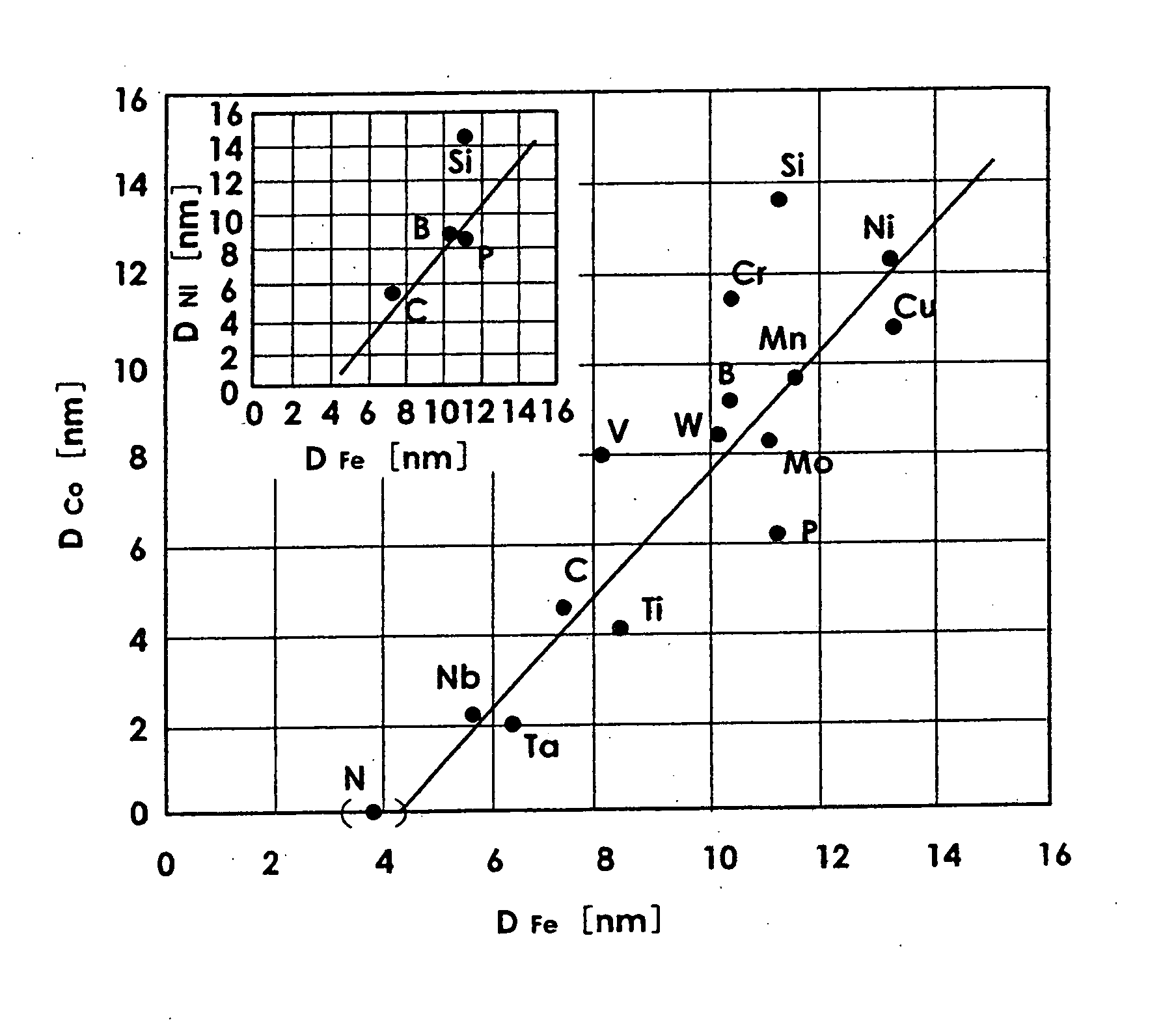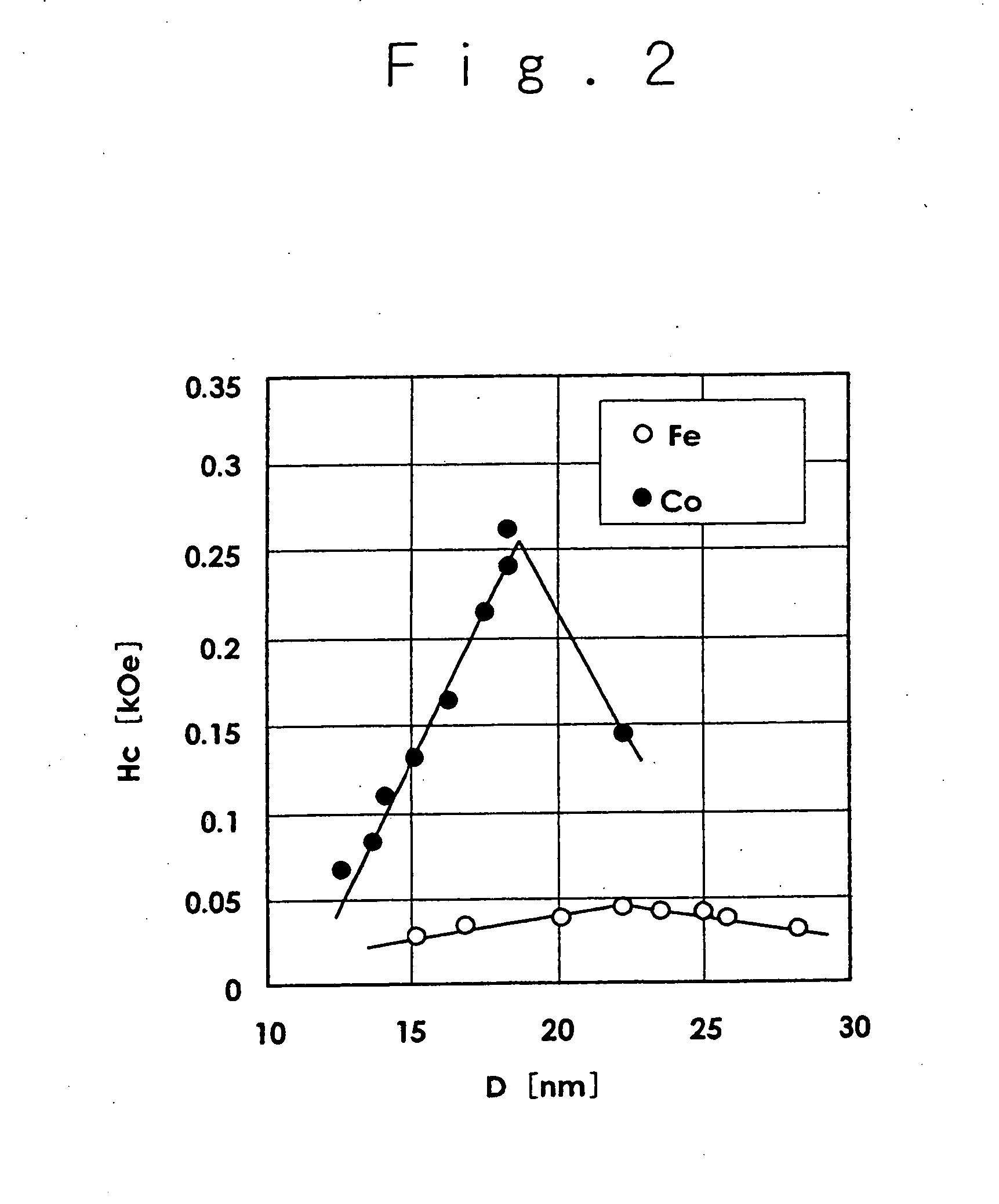Nano-crystal austenitic steel bulk material having ultra-hardness and toughness and excellent corrosion resistance, and method for production thereof
a technology of austenitic steel and nanocrystals, which is applied in the field of super hard and tough nanocrystal austenite steel bulk materials, can solve the problems of insufficient fine powders, inability to obtain materials whose grain diameters are reduced down to the nano-size level, and inability to reduce down to the nano-order. , to achieve the effect of improving corrosion resistance, facilitating preparation, and improving crystal grain reduction
- Summary
- Abstract
- Description
- Claims
- Application Information
AI Technical Summary
Benefits of technology
Problems solved by technology
Method used
Image
Examples
example 1
[0111]FIG. 1 is illustrative of changes in the mean crystal grain diameter of each mechanically alloyed element, that is, iron, cobalt and nickel when a 50-hour mechanical alloying (MA) was applied to an elementary powder mixture having an M85A15 (at %) (M is iron, cobalt or nickel), which comprised powders of the elements iron, cobalt and nickel with the addition thereto of 15 at % of carbon (C), niobium (Nb), tantalum (Ta), titanium (Ti), phosphor (P), boron (B) and so on as other elements (A). It is here noted that the data about nitrogen N are directed to iron alone.
[0112] In FIG. 1, DFe, DCo and DNi are the mean crystal grain diameter (nm) of the mechanically alloyed iron, cobalt, and nickel, respectively. From FIG. 1, it has been found that the reduction of crystal grain diameters of each of the elements iron, cobalt and nickel can be more effectively promoted by mechanical alloying with the addition thereto of carbon, niobium, tantalum, titanium and so on, all the three elem...
example 2
[0114]FIG. 2 is illustrative of the relationships between the mean crystal grain diameter D (nm) and the coercive force Hc (kOe) of mechanically milled (MM) iron, and cobalt.
[0115] From FIG. 2, it has been found that both iron and cobalt decrease in coercive force Hc as D decreases from a critical grain diameter D of around 20 nm, resulting in improvements in soft magnetism.
example 3
[0116]FIG. 3 is illustrative of the results of a 1,000° C.-extrusion (at a pressure of 98 MPa) of powder samples (a) and (b), each of TiC alone.
[0117] From a comparison of sample (a) to which 100-hour mechanically milling (MM) was applied with sample (b) to which no MM was applied, it has been found that a portion of the sample (a) extruded out of an die aperture has a length of about 12 mm whereas that of sample (b) has a length of about 1 to 2 mm. Such differences in forming behavior between both samples would be probably due to the superplasticity of sample (a) whose crystal grains are reduced down to the ultra-fine level by mechanical milling (MM).
PUM
| Property | Measurement | Unit |
|---|---|---|
| Temperature | aaaaa | aaaaa |
| Temperature | aaaaa | aaaaa |
| Fraction | aaaaa | aaaaa |
Abstract
Description
Claims
Application Information
 Login to View More
Login to View More - R&D
- Intellectual Property
- Life Sciences
- Materials
- Tech Scout
- Unparalleled Data Quality
- Higher Quality Content
- 60% Fewer Hallucinations
Browse by: Latest US Patents, China's latest patents, Technical Efficacy Thesaurus, Application Domain, Technology Topic, Popular Technical Reports.
© 2025 PatSnap. All rights reserved.Legal|Privacy policy|Modern Slavery Act Transparency Statement|Sitemap|About US| Contact US: help@patsnap.com



